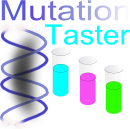|
|
Position:
3:190290361-190412138 (GRCh
)
Gene Summaries |
|
|
ClinVar:
Gene constraints:
|
||
|
Domains
|
||
Data Updates
| entity | last update (YYYY-MM-DD) |
| ClinVar | 2022-09-13 |
| ClinVar (likely) pathogenic variants | 2024-12-27 |
| Ensembl protein families | 2023-08-17 |
| Ensembl:Genbank (Biomart) | 2024-12-02 |
| Ensembl:Genbank (MANE) | 2024-12-02 |
| Entrez gene RIFS | 2024-10-18 |
| Entrez gene history | 2024-10-18 |
| Entrez gene positions | 2024-10-18 |
| Entrez gene synonyms | 2024-10-18 |
| Entrez genes | 2024-10-18 |
| Gene Ontology | 2023-08-06 |
| HPO | 2023-10-12 |
| HPO / OMIM | 2023-10-12 |
| HPO / Orphanet | 2023-10-12 |
| HPO / genes | 2023-10-11 |
| Interpro protein domains | 2023-08-17 |
| MGD/OMIM | 2023-06-28 |
| MGD/broad phenotypes | 2023-07-05 |
| NCBI Entrez gene/Ensembl (Enseml Biomart) | 2024-12-02 |
| NCBI Entrez gene/Ensembl (HGNC) | 2024-12-02 |
| NCBI Entrez gene/Ensembl (MANE) | 2024-12-02 |
| NCBI Entrez gene/Ensembl (NCBI gene2ensembl) | 2024-12-02 |
| OMIM | 2023-08-02 |
| Orphanet | 2023-08-23 |
| Orphanet:HPO frequencies | 2023-08-23 |
| Pfam | 2023-08-17 |
| STRING (v12) | 2023-08-13 |
| Swissprot/Uniprot IDs | 2023-08-17 |
| gnomAD gene constraints | 2024-04-10 |


 MutationTaster
MutationTaster
 MutationDistiller
MutationDistiller
 RegulationSpotter
RegulationSpotter
 AutozygosityMapper
AutozygosityMapper
 SAMS
SAMS
 FABIAN-variant
FABIAN-variant